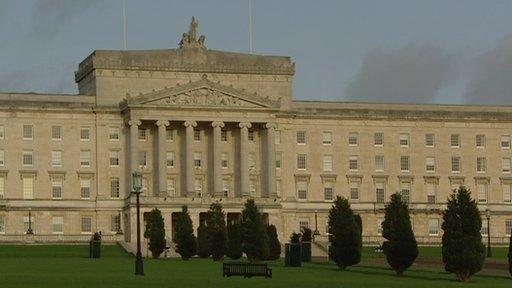Northern Ireland talks process: Cut Stormont down to size?
- Published
- comments
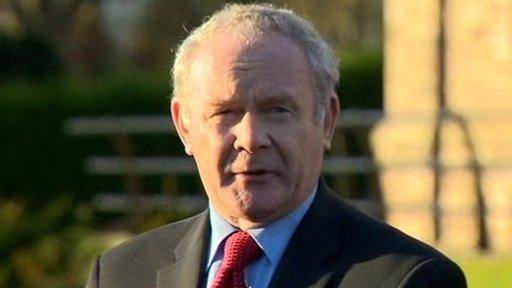
Deputy First Minister Martin McGuinness said he would be in favour of a reduction in the number of assembly members
The immediate emphasis in the Stormont talks has been on welfare reform and the budget, but the politicians are also discussing the not-entirely-unconnected question of cutting the size of the government.
The DUP has circulated a paper reaffirming its support for fewer departments and fewer MLAs. Previously, the party has argued for an assembly of between 70 and 80 MLAs, external.
Immediately after the Scottish referendum, Sinn Féin's Martin McGuinness signalled his backing for reducing the assembly from 108 to 90 members. So there's some degree of common interest between the two biggest parties, whilst the UUP, SDLP and Alliance are left to wonder how much damage they would suffer if both MLA numbers and Stormont ministries are cut.
The pollsters Lucid Talk recently published their projection, external of what a 90-strong assembly might look like.
Outside the Stormont talks, the Organisation for Economic Co-operation and Development (OECD), external has been asked to review elements of our public sector in order to compare its performance with the delivery of services elsewhere.
Slimmed-down Stormont?
They will be looking at specific case studies within the remit of individual departments, but if they feel the need to take a wider view they might find themselves considering whether all 12 Stormont departments are worth preserving.
The OECD team is starting work this month, but if the Stormont talks make progress they might find some of the political landscape changing around them before their deadline to finish their work in November 2015.
How might a slimmed-down Stormont look? Recently I came across a blueprint dating back to November 2006 and the days when Peter Hain was secretary of state.
In the event of the talks on restoring devolution failing, Mr Hain had asked his advisers for a blueprint on "a new structure for the Northern Ireland departments that would improve delivery of services and streamline the working of government".
What they came up with was a seven department model. The Office of the First and Deputy First Ministers (OFMDFM) would have remained a central co-ordinating department.
It would have lost some functions, such as responsibility for children and young people, but it would have taken over the setting of the executive budget from what is now Simon Hamilton's finance department.
Mergers
The lead economic strategic delivery departments would have been called the Department for Economic Development and Employment (DEDE). This would have merged Arlene Foster's current enterprise department with the employment and careers functions now in Stephen Farry's remit.
A new Department for Education, Skills and Culture (DESC) would have merged John O'Dowd's current education department with the remainder of the employment and learning department.
It would have taken over most of the role of Carál Ní Chuilín's culture, arts and leisure department as well as the responsibility for children and young people, which now rests with the OFMDFM.
A Department for Health and Social Care (DHSC) would largely replicate Jim Wells' current health department.
A Department for Sustainable Development and Energy (DSDE) would have taken in most of Mark H Durkan's environment department, Danny Kennedy's regional development department and Michelle O'Neill's agriculture department.
In addition, it would have taken over the enterprise department's energy role and the OFMDFM's responsibility for sustainable development.
A Department for Communities and Social Inclusion (DCSI) would have taken over most of Mervyn Storey's social development department functions, as well as the anti-poverty, social exclusion and equality responsibilities currently with the OFMDFM.
A Department for Justice and Public Protection (DJPP) would replicate David Ford's current justice department, as well as taking on responsibility for the Northern Ireland Fire and Rescue Service (NIFRS), which currently come under health, and liaison with the Northern Ireland court service from the current finance department.
Forgotten files?
The Hain blueprint also included the seven planned super councils, a single Education and Skills Authority (ESA), health and social care and libraries authorities, plus a new environment protection agency.
It was hoped that the 81 existing quangos would be cut to 53.
The plan was that this new seven department structure should be put in place by April 2008, but with the restoration of devolution and the need to find ministerial seats for a wide range of Stormont parties, the paper was consigned to the back of a civil service filing cabinet.
I wonder, if given the current appetite for slimming down Stormont, will the politicians and senior civil servants blow the dust off their copies to examine whether the Hain plan has stood the test of time?
If they can't find it, here it is, external.
- Published23 October 2014
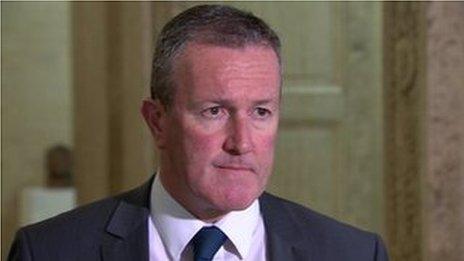
- Published9 October 2014
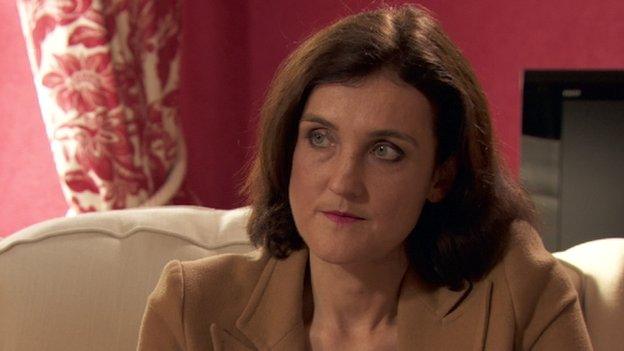
- Published17 September 2014
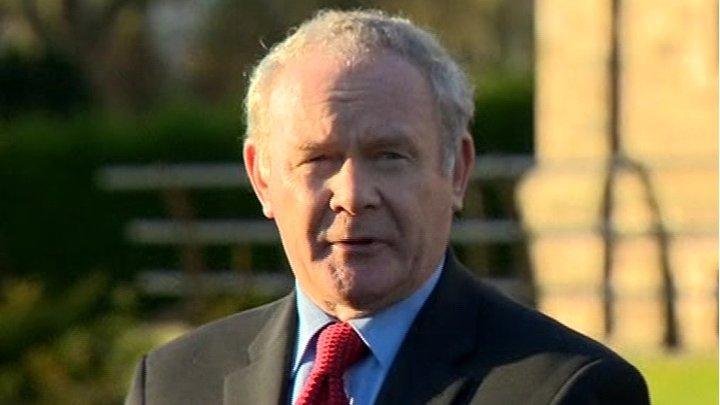
- Published9 September 2014
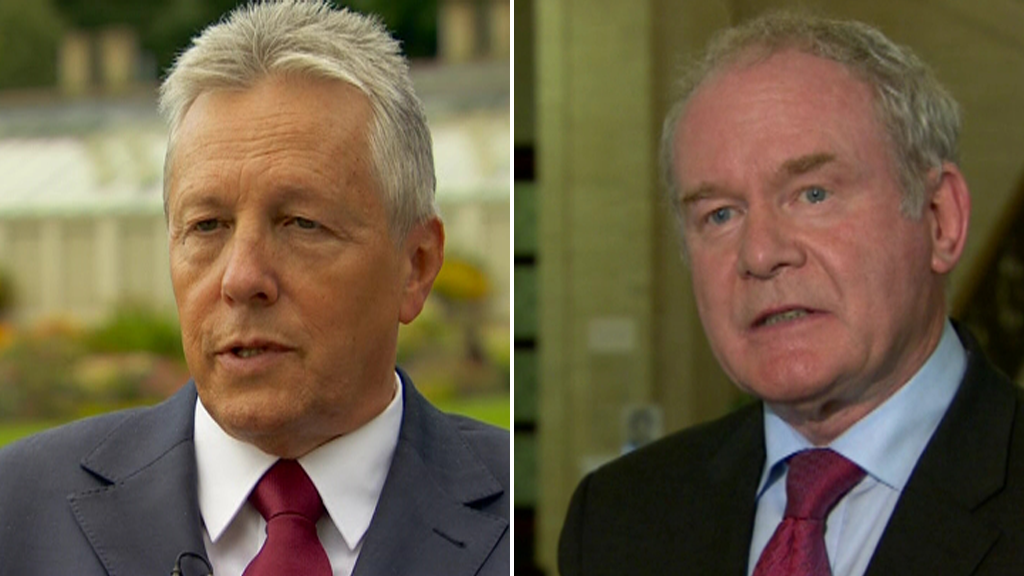
- Published29 August 2014
